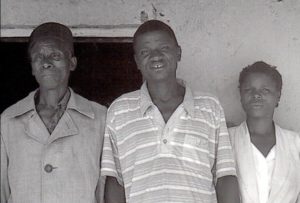A news story from Sumbawanga, Tanzania, on August 12 announced that the government of the Rukwa Region was urging traditional healers to register their healing medicines. The article does not mention the society the healers identify with, but most of them would probably be Fipa.

The healers, members of the Tanzanian Society for Traditional Healers and Midwives, will be authorized to provide their services to the public once their medicines are registered with the National Council of Traditional and Alternative Medicines. Dr. Paul Mhame, the Director of the Traditional Medicine and Alternative Therapy department in the government, described the new requirement during a meeting of the society. The meeting was organized to examine the role of the traditional healers in combating the COVID-19 pandemic.
Dr. Mhame explained the benefits of registering the traditional medicines. Registration certifies the safety and potency of the medicines; it also fosters exploring their potential for wider marketing. He added that the alternative medicines provided a lot of help in stopping the first wave of the pandemic last year before the vaccines were released. Alternative therapy procedures such as using steam therapy seemed to be helping the victims of the virus.
Another local medical official, Dr. Boniface Kasulu, also emphasized at the meeting the need for traditional healers to understand how they can serve their patients without contributing to the spread of the Coronavirus. He added that traditional healing methods had been important aspects of the local culture for many generations. The public has a lot of faith in the medications.
Dr. Kasulu’s last comment prompts a search through the literature about the Fipa for the history of traditional healing in their society. Willis (1968a) observed that patients went to their village healers for treatments of physical ailments and mental illnesses, and for assistance in obtaining desirable objectives. He described in detail the different ingredients that the traditional healer might use in his medicines—for example, bits of animals, vegetables, and minerals found in the bush. A woman suffering from dizziness, for instance, might have been treated by a healer with pieces of swallow’s nests, symbols of self-contained, but fixed, stability.
By the time Willis studied the Fipa, in the 1960s, traditional healers were quite common. He felt that the Fipa were ambivalent about patronizing traditional healers versus practitioners of modern, Western medicine. Apparently, the people would go to either western or traditional healers, whichever proved to be the more effective, but they suspected that sorcery would be practiced by both.
The anthropologist indicated that the tradition of healing had changed a lot in Ufipa by 1964 when he had completed most of his fieldwork. An earlier, elaborate structure of mystical beliefs and behaviors had collapsed with the introduction of Roman Catholicism in the late 19th century. The moral and social forces involved with traditional healing were disintegrating.
The healer, the asinaanga in Fipa society, evolved from a magician-doctor who practiced divination, to a shaman who was able to divine through spirit possession, to, in 1964, an individual who dispensed simple, ad hoc, medicines.